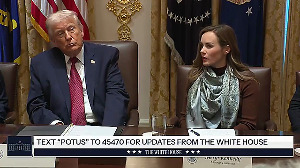Investors in India tend to opt for actively managed funds over ETFs due to the former’s outperformance.

Exchange-traded funds (ETFs) seem to be the flavour of the season.
Three different asset managers have filed documents with the regulator to launch new ETFs in 2015.
The number of such filings has risen to three in March and five since the beginning of the year.
The filings are set to rise, with more asset management companies (AMCs) working on getting their ETFs to the market.
The SBI ETF 10-year gilt, filed on Monday, is the latest. Falling interest rates are a positive for government securities (gilts).
The Reserve Bank of India has cut interest rates twice in two months.
Other ETFs for which documents have been filed are in the equity segment.
These include the ICICI Prudential Bank ETF, the R*Shares CNX Midcap ETF, the R*Shares NV20 ETF, and the Reliance MSCI India Domestic ETF.
These come as investor inflows into equity schemes have been robust. Flows into non-gold ETF products have averaged about Rs 500 crore in the past five months.
An ETF typically holds securities in the same proportion as the index it tracks.
It is a passively managed fund, which means it does not seek to take active calls on which stock or security will outperform, merely attempting to replicate the performance of its benchmark.
“The slew of ETFs to the market has little to do with the current market condition.
Globally, ETFs are very popular.
Sooner or later, they are bound to have a big presence. AMCs are taking a pro-active step by launching ETFs,” said Vikaas Sachdev, ?chief executive officer, Edelweiss Asset Management.
An estimate last year put the assets of Indian equity ETFs at a tenth of India-dedicated ETFs located abroad.
Investors in India tend to opt for actively managed funds over ETFs due to the former’s outperformance.
 Seven of ten MF schemes beat their benchmark, according to an earlier analysis by Business Standard.
Seven of ten MF schemes beat their benchmark, according to an earlier analysis by Business Standard.
Dhirendra Kumar, chief executive officer of fund tracker Value Research, said Indian ETFs have higher charges than their global peers and have not always been efficient in replicating index returns.
“Globally, the advantage of ETFs is that they are low-cost and replicate index returns, unlike actively managed funds, where one doesn’t know if there will be underperformance. In India, these two advantages don’t hold true.
Besides, most actively managed funds outperform,” he said.
Dinesh Khara, managing director and chief executive officer, SBI MF, said their gilt fund was launched as a vehicle for institutions which wish to take a call on interest rates. Foreign investors are also being eyed.
“The intention here is to provide passively managed funds to institutions…globally, we have seen that there is a trend towards passively managed funds. It is important to complete our portfolio in terms of our offerings towards foreign investors as well,” he said.
The ETF market has been limited in India. Total assets under management for these funds was Rs 14,639 crore (Rs 146.39 billion) last month, according to data from the Association of Mutual Funds in India. Non-gold ETFs, which include equity funds, account for Rs 7,795 crore (Rs 77.95 billion).
In comparison, actively managed equity funds account for Rs 3.06 lakh crore (Rs 3.06 trillion) in assets and total MF sector assets are over Rs 12 lakh crore (Rs 12 trillion).
WHY AMCs ARE TAKING A FRESH LOOK AT ETFs
Experts say foreign institutions have been evaluating passively managed funds
Looking to take sectoral exposure through the ETF route when investment limit is hit
Also, insurance players need three-year profitability while investing in a company
Does not apply if exposure is through an ETF
AMCs say they wish to complete their bouquet of offerings
AMCs plan to add to stable of actively managed schemes





.jpg)





